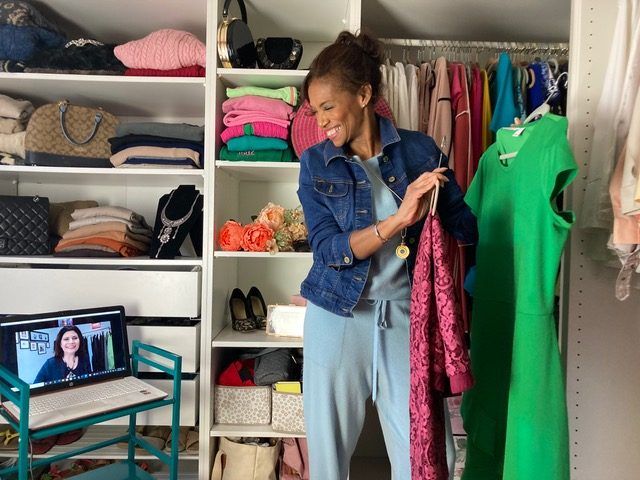Closet Clout: The Rise of the Digital Wardrobe and Virtual Styling

Welcome to the era where your wardrobe lives in the cloud.
What you wear has always been a form of identity—but now, it’s also data. Fashion is being reimagined through the lens of tech, and the physical act of getting dressed is merging with the digital world in ways that felt like sci-fi just a few years ago. From virtual fitting rooms to AI-powered styling apps and digital-only garments you can wear in augmented reality, the way we think about our closets is evolving—fast.
This is the rise of the digital wardrobe, and it’s redefining what it means to have style in 2025.
The Closet Is Now a Dashboard
Apps like Whering, Acloset, and Stylebook are leading a quiet revolution: helping users digitize their closets, track wear frequency, plan outfits in advance, and even get suggestions for new looks based on what they already own. Instead of rummaging through drawers or trying to remember what pants go with that one jacket, your wardrobe is now a swipeable interface.
This isn’t just about convenience—it’s about making fashion smarter.
By mapping out what you already own, digital wardrobe apps help reduce overbuying, highlight underused items, and allow for more intentional shopping. In an age of endless drops, sponsored hauls, and fast-moving trends, the ability to zoom out and actually see your wardrobe is a low-key superpower.
Virtual Styling Goes Mainstream
We’re also seeing the rise of personal styling powered by algorithms. AI-driven apps can now recommend outfit combinations based on your mood, the weather, your calendar, and your past outfit history. It’s like having a personal stylist in your pocket—but one that learns from you over time.
For creators and brands, this technology opens doors to styling experiences that are interactive, hyper-personalized, and scalable. Fashion doesn’t need to be static or one-size-fits-all anymore. It’s adaptive. It moves with you. It learns you.
Let’s say you just bought a structured women’s waistcoat in light wool. A styling app might suggest three ways to wear it: over a white tee and jeans for a casual day look, layered under a blazer for meetings, or paired with wide-leg trousers and heels for an elevated evening fit. All pulled from your digital wardrobe—and maybe even paired with pieces you forgot you had.
That kind of versatility wasn’t easy to unlock before. Now, it’s standard.
Augmented Fashion and the Meta-Fit
Augmented reality (AR) is also changing the fitting room experience. Retailers like H&M and Zara are investing in AR tools that let users try on clothes digitally, seeing how different pieces drape and layer on a virtual model or even their own body via smartphone cameras. No awkward changing rooms. No size guesswork.
This is especially huge for tricky-to-fit pieces—like tailored blazers or, yes, women’s waistcoats, which rely heavily on proportion and cut. Seeing how they work with your frame, in real time, removes the uncertainty from online shopping.
And then there’s the world of digital-only fashion: garments you buy not to wear physically, but to wear in photos, on avatars, or in virtual environments. Meta fashion drops from brands like The Fabricant or DressX allow users to purchase exclusive looks for their online personas, gaming platforms, or social profiles. Think of it as digital couture—designed for pixels, not pavement.
It might sound like a gimmick, but it’s quickly becoming a serious part of fashion’s future—especially as the lines between our digital and physical lives keep blurring.
Style Without Waste
One of the strongest arguments for digital wardrobe tech is its potential to make fashion more sustainable. When you can visualize your closet, track what you wear most, and digitally test outfits before buying, you reduce impulse purchases and waste.
Closet analytics might show you that you never wear skirts, even though you keep buying them. Or that you wear one black women’s waistcoat three times as often as any blazer. That kind of data leads to smarter choices—and smarter style.
Brands are also taking note. More retailers are integrating “style it with” features and AR previews into their e-commerce platforms. Some even let you upload your digital closet to see how a new item would fit your existing wardrobe. It’s about merging commerce with context—and it’s working.
The Future Is Hybrid
As virtual styling, AR, and digital closets grow more sophisticated, we’re heading toward a hybrid model of fashion. The physical and digital will coexist. You’ll still have your favourite jacket, your go-to boots, your real-world statement pieces—but you’ll also have a digital twin of your wardrobe, making your fashion life smoother, smarter, and more expressive.
Your style won’t just live in your closet anymore. It’ll live in your phone, your mirror, your feed.
And when someone compliments your outfit, don’t be surprised if they ask: “Did you style that yourself, or was it AI?”
Final Word: Style is Getting an Upgrade
Digital fashion tools won’t replace creativity—they’ll supercharge it. They’re not here to tell you what to wear. They’re here to help you unlock what’s already in your closet, push the boundaries of how you express yourself, and make fashion work harder for you.
Whether you’re layering a digital puffer in the metaverse or figuring out five new ways to wear your favourite women’s waistcoat IRL, one thing’s clear: your closet just levelled up.

Source: Closet Clout: The Rise of the Digital Wardrobe and Virtual Styling



